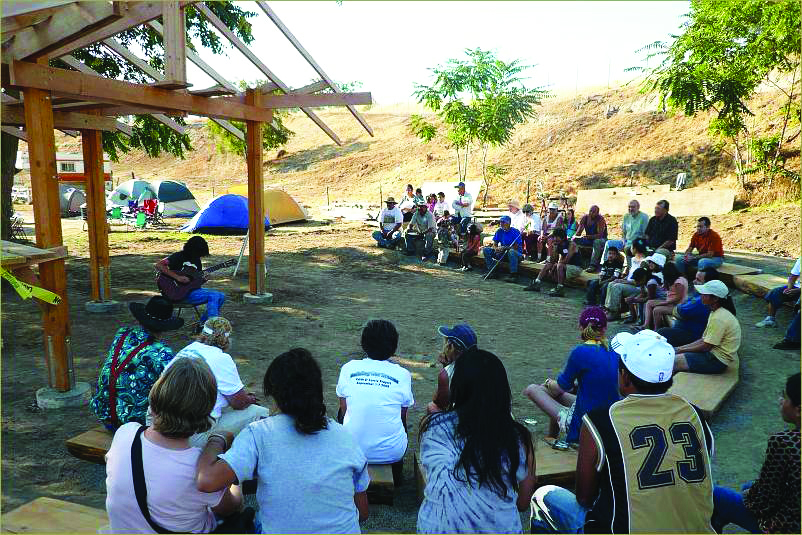NATIONAL ATR NETWORK SURVEY
Hundreds of ACEs, trauma, & resilience networks across the country responded to our survey. See what they shared about network characteristics, goals, and technical assistance needs.
In Walla Walla, Washington, a banner made by penitentiary inmates stretches across Main Street. One side announces, “October Is Children’s Resilience Month.” The other reads, “Resilience Trumps ACEs.”
For Teri Barila, Coordinator of the Walla Walla Community Network, that 35-foot stretch of cloth is just one of the small ripples that, when added up, create a tide of change across the state.
Barila was struck by hearing Rob Anda, co-investigator of the ACE Study, at a conference in 2007. He told of presenting ACE data at a Congressional hearing and having legislators respond with diffidence: It’s not government’s job to tell parents how to raise their children.
“His next point was: We’re going to make this happen by creating grass-roots initiatives in every community. So go home and make something happen,” Barila recalled. “That’s the message that hit me that day: We are the movement.”
Geoffrey Morgan, former Executive Director of the Whatcom Family & Community Network, had a similar epiphany a few years earlier after hearing Anda’s colleague, Vincent Felitti, discuss ACEs as a public health issue. “This wasn’t new information, but the epidemiological view of it was really different,” he said. “This was a community problem, not a client problem.”
For more than a decade, the networks in Whatcom and Walla Walla have spread ACE and resilience information in their communities, offered each other technical assistance and shared their successes and stumbles. As participants in the MARC collaborative, they will use both communities as dual pilot sites while working with Washington’s ACEs Public-Private Initiative (APPI) to bring their learning statewide.
Both networks have advisory groups—parents, professionals, educators, business people and community members—specifically focused on ACEs and resilience. Both have instigated community conversations as well as formal trainings in arenas including child welfare, early childhood education, substance abuse prevention, mental health, juvenile justice and human services.
And both have learned the value of relationships and repeated exposure in sharing knowledge about ACEs and resilience. “One of the biggest lessons for us has been that persistence pays off,” Barila said. “Ultimately, even entrenched systems begin to see that current practices aren’t working.”
Morgan said the work demands both passion and patience. “Nobody changes because somebody yells at them,” he said. “When somebody’s excited, that’s the time to partner.”
Barila cites tangible signs of change: county resolutions, city proclamations, new initiatives and school policies that reflect an understanding of ACEs, resilience and trauma-informed practice; state agencies that have added ACEs/resilience positions; and training on the Compassionate Schools curriculum in more than 50 districts.
Perhaps the most high-profile outcome is the transformation of Walla Walla’s Lincoln High School, whose principal was galvanized by hearing a presentation on trauma and brain development. He used that information to completely reboot the school’s discipline practices, replacing a compliance-driven model with a compassionate, trauma-sensitive approach. The dramatic effect—on suspension rates, school climate, students and staff—is chronicled in Paper Tigers, a new documentary by James Redford.
“Paper Tigers is a huge success,” said Barila. “But so is the parent bringing their child to the Walla Walla Resilience Treasure Hunt. All those little things add up to community awareness and action and common language.”
Fashioning a consistent, effective message has been one of the networks’ ongoing challenges, Morgan said. When the focus is solely on adversity and how it can damage the brain and body, listeners are apt to take away the idea that “some people have harder lives, and that’s their problem,” Morgan said.
“ACEs, by themselves, are kind of a dead end,” agreed Barila. “This is about hope and healing, about neuroplasticity and reshaping those patterns and pathways.”
Both networks are eager to learn from other MARC communities—not to replicate their efforts, but to understand how different coalitions discovered what would work best in their areas. Barila would like to hear from those who’ve had success engaging health care providers, a sector that has proven difficult to reach in Washington.
They also want to talk about sustainability—for their own networks, and for the national movement on ACEs and resilience as a whole. What processes are in place for coaching a new generation of leaders? How can longtime participants avoid burnout? And how can local communities internalize the work?
“I’m excited about…measuring what matters to us, so we can start to talk as a community about noticing what we want, not what we don’t want,” Morgan said. “How do we start telling the story of resilience through our data?”
One story still captivates and motivates Barila. She invited her mother’s care provider, Annett, a high school graduate with an ACE score of 10, to hear one of Anda’s presentations. Afterward, Annett approached the microphone and said, “For the first time in my life, I realized what happened to me was not my fault.”
For Barila, it was another “aha” moment. “I thought: If an individual could be so moved in one experience, how many other people are just begging for this kind of information to put their lives in perspective?”
This article is part of a community update series following the ATR networks participating in the MARC 1.0 Initiative. Read the other updates from Washington, including Walla Walla and Whatcom Counties:
